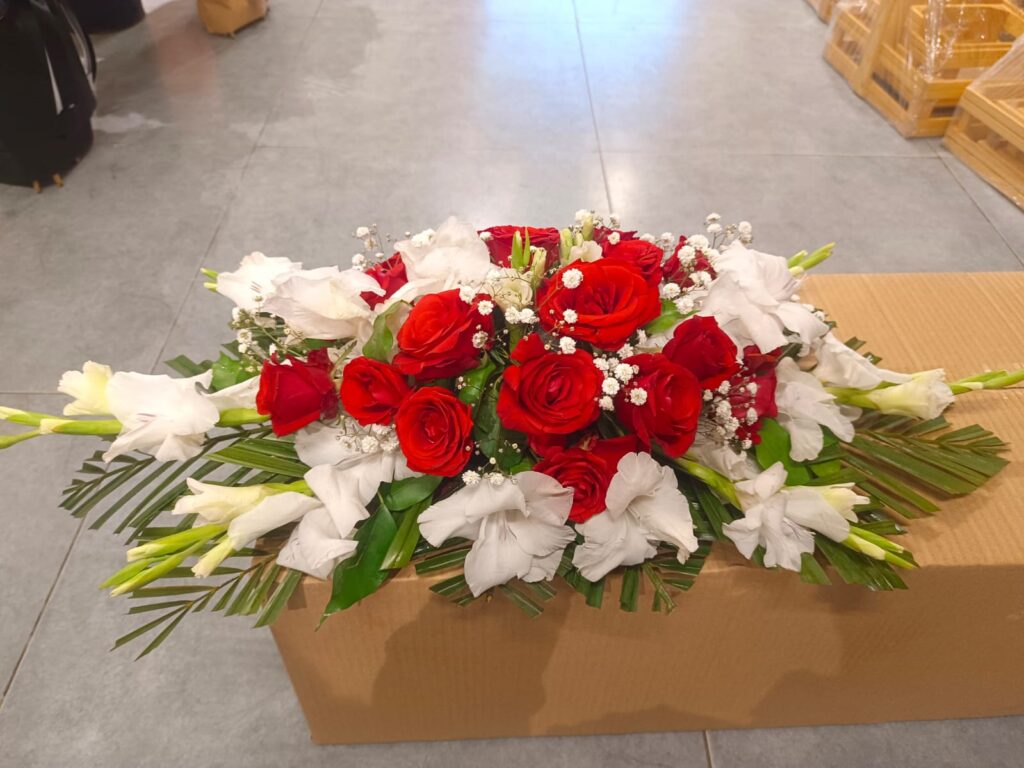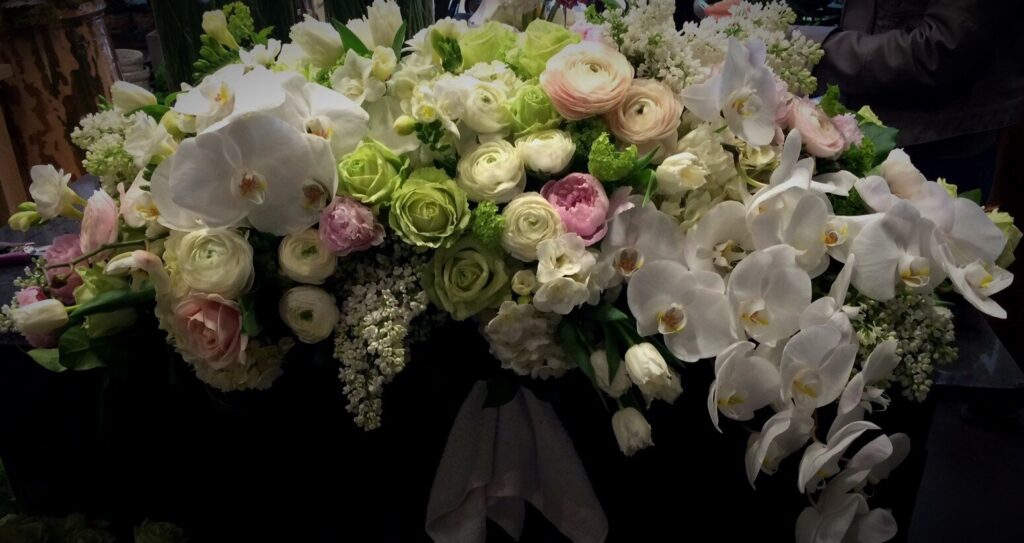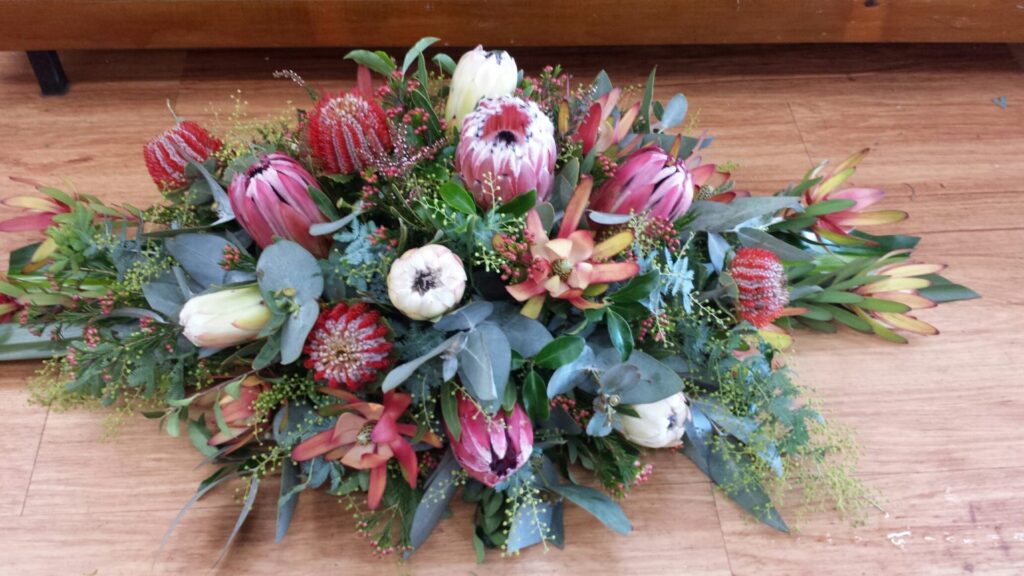When it comes to honoring the legacy of a loved one who has passed away, creating a meaningful funeral flower display can be a beautiful and heartfelt tribute. Funeral flowers have long held significant symbolism, representing love, support, and remembrance. Understanding the language of flowers in mourning and the cultural significance they hold can help you select the perfect floral arrangements for the occasion.
Understanding the Symbolism of Funeral Flowers
Funeral flowers have a language of their own, conveying specific emotions and sentiments. The funeral wreaths Sydney carries a unique meaning, and when combined, they create a tapestry of symbolism. Roses, for example, symbolize love and beauty, while lilies represent restored innocence and purity. By understanding the symbolism behind different flowers, you can create a more personalized and meaningful display.
Funeral flowers play a significant role in honoring the deceased and providing comfort to the bereaved. The colors of the flowers also hold symbolic meanings; white flowers symbolize purity and peace, while red flowers can represent love and courage. By carefully selecting the right combination of flowers and colors, you can create a tribute that reflects the personality and life of the departed.
The Language of Flowers in Mourning
In the language of flowers, certain blooms are traditionally associated with mourning and grief. For instance, the white chrysanthemum is a common funeral flower in many cultures, symbolizing death and lamentation. Other flowers, such as carnations and gladioli, express sympathy and condolence. Incorporating these flowers into your funeral display can help convey your deepest condolences to the grieving family. Click here for the perfect anniversary flowers to express devotion.
Additionally, the arrangement and presentation of funeral flowers hold significance. Circular wreaths symbolize eternal life and continuity, while heart-shaped arrangements convey love and remembrance. Understanding these nuances can help you choose the most appropriate floral tribute for the occasion.
Cultural Significance of Funeral Flowers
Funeral flower customs vary across different cultures and religions. For example, in Chinese culture, white and yellow flowers are often used during funerals to symbolize purity, sincerity, and respect. On the other hand, Hindu funerals may feature garlands made of marigolds, which are considered sacred and believed to help guide the soul to its afterlife. Understanding the cultural significance of funeral flowers can help ensure your display aligns with the customs of the deceased’s heritage.
It is essential to be mindful of any religious or cultural practices when selecting funeral flowers. Some cultures may have specific taboos or preferences regarding certain flowers, colors, or arrangements. By respecting these traditions, you can show your reverence for the departed and their cultural background.
Selecting the Right Flowers for a Funeral Display
When selecting flowers for a funeral display, several factors should be taken into consideration. Seasonal considerations play a role in flower availability and can influence the overall aesthetic of the arrangement. Additionally, personalizing the flower selection allows you to incorporate the deceased’s favorite blooms or colors, adding a touch of their personality to the display.
Funeral flowers have a long-standing tradition of conveying emotions and messages without words. The choice of flowers can symbolize different sentiments such as love, remembrance, and sympathy. Each bloom carries its own significance, making the floral arrangement a powerful way to express feelings towards the departed.

Seasonal Considerations for Funeral Flowers
Choosing flowers that are in season ensures the freshest and most vibrant blooms for the funeral display. For example, springtime arrangements may feature tulips and daffodils, symbolizing renewal and hope. In contrast, winter displays may incorporate evergreen branches and berries, representing everlasting life and resilience. Adapting your flower selection to the season can create a display that reflects the natural beauty of the present moment.
Summer funeral displays often include bright and cheerful blooms like sunflowers and lilies, evoking warmth and positivity. Autumn arrangements may feature rich hues of orange, red, and yellow, symbolizing comfort and transition. By aligning the flower selection with the season, you can create a cohesive and visually striking tribute.
Personalizing Flower Selections
Personalizing the flower selection allows you to create a truly meaningful funeral display. Consider incorporating the deceased’s favorite flowers or colors into the arrangement. Did they love roses or have a fondness for vibrant daisies? By including their preferred blooms, you can pay tribute to their unique personality and passions.
Another way to personalize the floral arrangement is by considering the symbolic meanings of different flowers. For instance, lilies are often associated with purity and the innocence of the soul, making them a common choice for funeral displays. Carnations, with their diverse range of colors, can represent love, admiration, or remembrance, providing a thoughtful touch to the arrangement.
Designing a Meaningful Funeral Flower Display
Designing a meaningful funeral flower display involves finding the balance between incorporating personal elements and ensuring a visually appealing arrangement. By considering the deceased’s interests, hobbies, or profession, you can create a display that reflects their individuality and celebrates their life.
When selecting flowers for a funeral display, it’s essential to choose blooms that hold significance or meaning. For example, lilies are often associated with purity and rebirth, making them a popular choice for funeral arrangements. Roses, with their diverse colors symbolizing love, respect, and remembrance, are another common choice. By carefully selecting flowers based on their symbolism, you can add another layer of meaning to the display.
Incorporating Personal Elements into the Display
Consider including personal elements in the funeral display that hold special meaning to the deceased. This could be anything from photographs or cherished items to items that symbolize their hobbies or interests. For example, if the person was an avid gardener, you could incorporate small gardening tools or potted plants into the arrangement.
Additionally, incorporating elements that reflect the person’s cultural background can add a meaningful touch to the display. For instance, if the deceased had Irish heritage, including a sprig of shamrock or incorporating green and white flowers can pay homage to their roots.
Balancing Aesthetics and Symbolism in Design
While it’s important to incorporate personal touches, it’s equally important to create a visually appealing arrangement. Balancing aesthetic elements such as color, shape, and texture ensures that the funeral display is not only meaningful but also visually striking. The arrangement should serve as a tribute to the deceased while providing comfort and solace to the bereaved.
Consider the placement of the flower display within the funeral venue. Placing it near a cherished photograph of the deceased or in a location with significant meaning can enhance its impact. Additionally, incorporating candles or soft lighting around the arrangement can create a serene atmosphere, adding to the overall ambiance of the space.
Practical Tips for Creating Funeral Flower Displays
Creating a funeral flower display requires attention to detail and care to ensure the flowers remain fresh and visually impactful throughout the service. Consider these practical tips when arranging the flowers:
Preserving the Freshness of Funeral Flowers
To keep the flowers looking fresh for as long as possible, trim the stems at an angle before placing them in water. Refresh the water daily to prevent the growth of bacteria and change wilted blooms promptly. Additionally, keep the flowers away from direct sunlight or drafts to help maintain their vitality.
Arranging Flowers for Visual Impact
When arranging the flowers, consider the visual impact you want to achieve. Vary the heights and shapes of the blooms to create dimension and interest. Additionally, choose complementary colors or monochromatic arrangements for a cohesive and visually striking display.
Furthermore, incorporating greenery such as eucalyptus or ferns can add texture and depth to the arrangement. These elements not only provide a natural backdrop for the flowers but also symbolize eternal life and renewal, adding a deeper layer of meaning to the display.
Personalizing the Flower Arrangement
Consider incorporating flowers or plants that held special significance to the deceased or their family. Whether it’s their favorite flower, a bloom from their garden, or a plant that represents a shared memory, adding these personal touches can make the arrangement more meaningful and comforting for those in mourning.

Etiquette for Funeral Flower Displays
Understanding funeral flower etiquette is important to ensure your display is respectful and appropriate. Observing religious and cultural practices, and considering the timing and placement of the flower arrangements, can help you navigate this sensitive aspect of funeral etiquette with care and sensitivity.
Respecting Religious and Cultural Practices
Funeral flower practices differ among different religions and cultures. Some religions may have specific guidelines for flower arrangements, such as avoiding certain colors or types of flowers. For example, in Hindu funerals, it is customary to avoid using white flowers, as they are associated with purity and celebration, which contrasts with the somber nature of the occasion. Similarly, in Chinese culture, red flowers are often avoided, as they are traditionally associated with joy and happiness. It’s essential to respect these practices and traditions when creating a funeral flower display, as it shows your understanding and consideration for the beliefs and customs of the bereaved.
Additionally, some cultures may have specific rituals or traditions associated with funeral flowers. For instance, in Mexican culture, marigolds are commonly used during the Day of the Dead celebrations to honor and remember deceased loved ones. Understanding these cultural nuances can help you choose appropriate flowers and arrangements that pay homage to the deceased in a meaningful way.
Appropriate Timing and Placement of Flower Displays
Funeral flower displays should be delivered or placed at the appropriate time and location. In some cases, flowers may be sent to the funeral home or church before the service. This allows the family and friends of the deceased to have a beautiful display to accompany the memorial service. It also serves as a visual representation of the love and support being offered during this difficult time.
Others may prefer flowers to be sent directly to the family’s home following the service. This gesture provides comfort and solace to the grieving family as they return to their home after the funeral. It serves as a reminder that they are not alone in their grief and that their loved one is remembered and cherished by many.
Understanding the preferred timing and placement ensures that your display is received and appreciated in the intended manner. It shows your thoughtfulness and consideration for the grieving family, allowing them to focus on their healing process without any additional stress or inconvenience.
By honoring the legacy of a loved one through a meaningful funeral flower display, you can offer comfort, support, and remembrance during a difficult time. Understanding the symbolism of funeral flowers, selecting the right blooms, and designing a personalized arrangement ensures that your tribute reflects the life and spirit of the departed. Whether it’s a simple bouquet or an elaborate floral arrangement, your thoughtful gesture will be deeply appreciated by those who are mourning the loss of their loved one.

